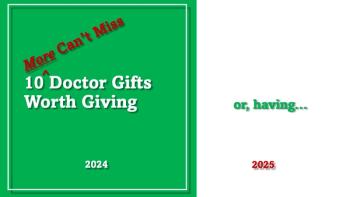
Earth Day Bonanza: The Economics of an Eco-friendly Practice - Part II
Part I focused on the need for creating a green health center. Part II advocates for global health initiatives by promoting a healthy environment and practicing medicine sustainability.
Advocating for the environment
Do you know the most significant environmental health risks in your community? Advocating for a healthy environment, the second domain of Green Health Care, has traditionally been the aim of organizations such as the EPA, state departments of environmental quality, or smaller non-governmental organizations that promote environmental initiatives. Green healthcare brings this into the clinic.
A green clinic stays informed on local environmental issues, such as air quality, water safety, toxic waste issues, and healthy sun practices. Physicians committed to environmental health in a green clinic become environmental health advocates. Once you learn the basics about your ecological region, you are better able to recognize the effects of environmental illness in your patients.
For many professionals, this requires learning protocols for the evaluation and examination of patients. Several resources for completing environmental screenings can be found at the websites for the
Knowledge of environmental health can also set up a ripple effect for the health of the community. Local and regional governments better support the findings of medical providers that report environmental illness. Rather than placing the burden on environmental activists for regulatory change, clear medical evidence of environmental illness can greatly improve the ability of local agencies to act to prevent further environmental risk.
Other elements of environmental advocacy include supporting other green health professionals, promoting public health initiatives, patronizing green businesses, becoming engaged with local environmental agencies and, ultimately, becoming a voice for green healthcare.
To date, few physicians have taken a hard look at the consequences of medical practices on the environment. Welcome
Teleosis Institute is the only organization that has developed educational programs that teach principles of ecology, sustainability, and medicine as an integrated subject. The 40-hour online course
Once professionals understand the consequences of downstream medical waste, less toxic medical practices are easily found. For example, the reliance on single-use medical supplies can be replaced with a more modest system of refurbished instruments.
An example of how sustainability enters the field of medicine can be found in emerging news about the disposal and waste of pharmaceuticals in the US. Many readers are aware that concentrations of pharmaceuticals are now consistently found in surface and drinking water in the US. While still low enough as single entities, precaution is required because the combined effects of the mixture of contaminants are unknown. Fish populations are beginning to show abnormal developments that could be a result of these micro-levels of waste pharmaceuticals. Unused and expired medicines are accumulating in people’s homes, causing not only a risk of poisoning or diversion for improper use, but an addition to the cost of unused pharmaceuticals, which is staggering.
Another approach to sustainability in medicine is to promote health opportunities before more intensive medical interventions are necessary. Again, diet and lifestyle changes for diabetes and heart disease are more cost effective, and even if eventual pharmaceutical or surgical interventions are necessary, the burden to the economy and the environment are still reduced.
Integrative physician Dean Ornish
Sustainable medicine encourages healthcare professionals to first consider medical techniques that are less resource dependent. Many choices exist that produce no waste in production while continuing to be safe, harmless, clean, non-toxic, non-polluting, and cost-effective. Examples include all forms of manual care or physical therapies, which are far more sustainable than traditional orthopedics. Supportive care, rather than cures, allow services to be distributed more equally and serve more of the overall population.
Prevention is an important example of sustainable healthcare. Placing more emphasis on preventative services saves money and saves lives.
Prevention, precaution, and promotion are all medical interventions that continue to be overlooked by the primary care physician who provides services dominated by pharmaceuticals and surgery. While there is certainly a place for all three of these well-developed interventions, a sustainable medical system places greater emphasis on basic medical interventions such as primary care services and public health investments. Each outperforms medical interventions for preventing acute and chronic illness, returning higher returns on money invested while increasing health opportunities for all people.
Green healthcare emphasizes medicine and healthcare that is rooted in the local community. A green hospital, a healthy environment, and a practice of sustainable medicine are investments in people and local community. I encourage all healthcare professionals to consider the wisdom and value of creating a healing environment to live, work, and play.
In the spirit of health, we have the opportunity to bring greater prosperity and health to each member of our society by simply becoming mindful of how we live with one another and how we live with the place we call home.
Joel Kreisberg is the founder and senior director of the Teleosis Institute, a program of
Newsletter
Stay informed and empowered with Medical Economics enewsletter, delivering expert insights, financial strategies, practice management tips and technology trends — tailored for today’s physicians.



















